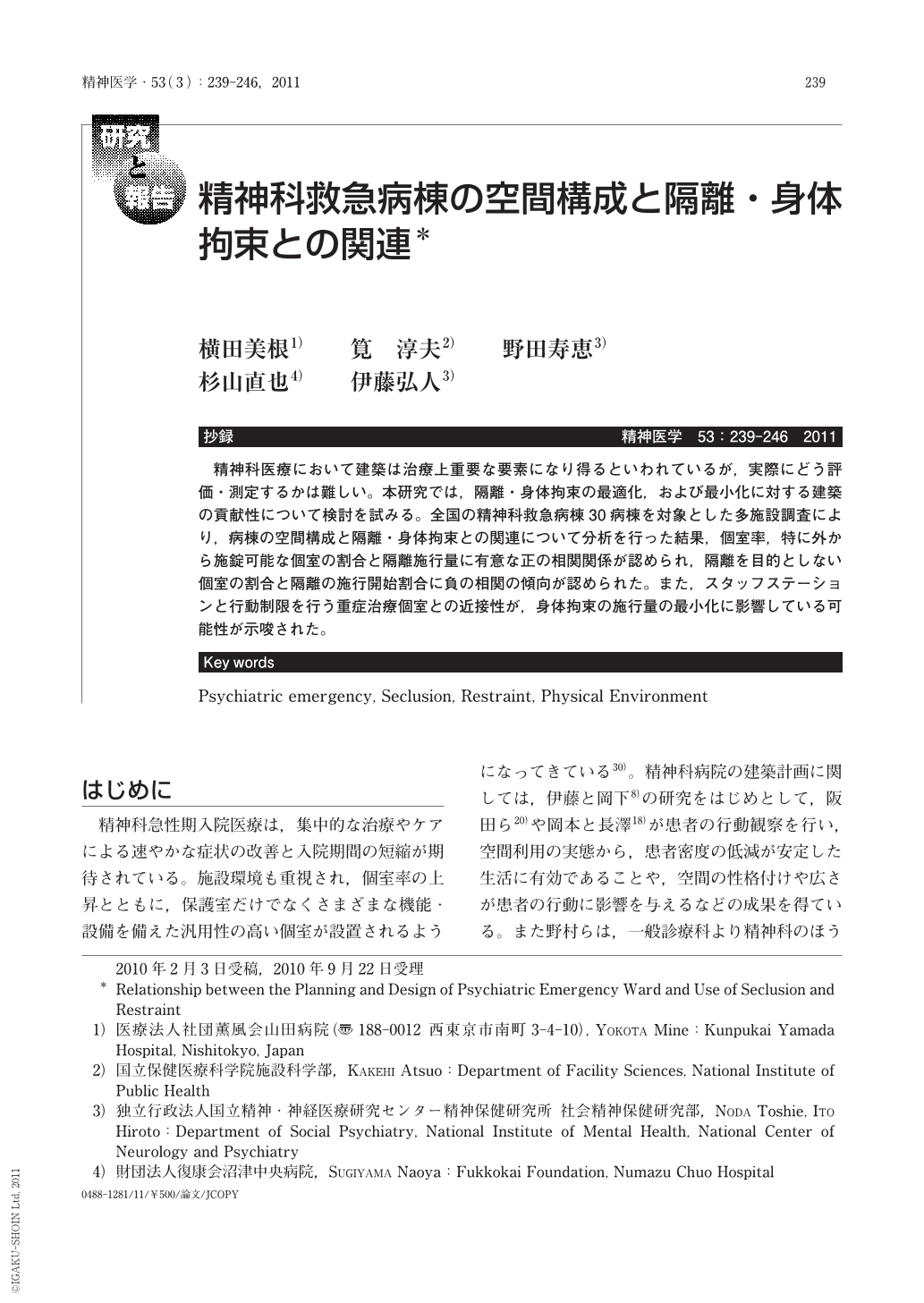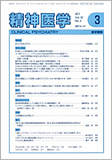Japanese
English
- 有料閲覧
- Abstract 文献概要
- 1ページ目 Look Inside
- 参考文献 Reference
- サイト内被引用 Cited by
抄録
精神科医療において建築は治療上重要な要素になり得るといわれているが,実際にどう評価・測定するかは難しい。本研究では,隔離・身体拘束の最適化,および最小化に対する建築の貢献性について検討を試みる。全国の精神科救急病棟30病棟を対象とした多施設調査により,病棟の空間構成と隔離・身体拘束との関連について分析を行った結果,個室率,特に外から施錠可能な個室の割合と隔離施行量に有意な正の相関関係が認められ,隔離を目的としない個室の割合と隔離の施行開始割合に負の相関の傾向が認められた。また,スタッフステーションと行動制限を行う重症治療個室との近接性が,身体拘束の施行量の最小化に影響している可能性が示唆された。
The purpose of this study was to examine the relationship between the planning and design of psychiatric emergency ward and use of seclusion and restraint. Thirty psychiatric emergency wards were studied. We collected monitoring sheets on seclusion and restraint, floor plan, and questionnaire about the single-patient rooms in these wards. The single-patient rooms were categorized into two types―lockable rooms, which could be locked from the outside, and non-lockable rooms, which could not be locked from the outside. The results of this study showed a significant positive correlation between the frequency of seclusion and the rate of single-patient lockable rooms per total number of beds. In addition, a negative correlation was obtained between the frequency of seclusion and the rate of single-patient, non-lockable rooms. The frequency and duration of restraint correlated with the distance of the nursing station from the patient room. Restraint was less frequently required in wards where the nursing station was closer to the patient room than in other wards. Our results suggest that proper psychiatric ward planning and design can minimize the need for seclusion and restrain.

Copyright © 2011, Igaku-Shoin Ltd. All rights reserved.


